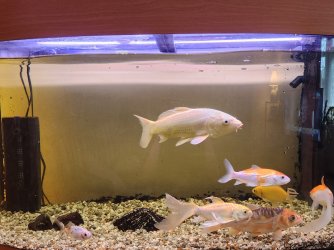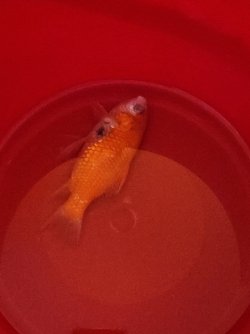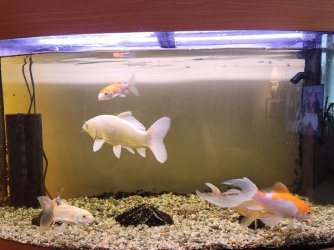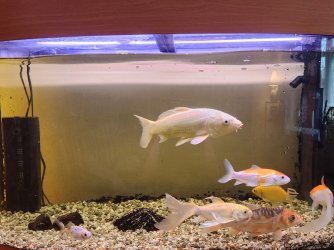jijifish
New Member
Hi,
I'm new to fish keeping and i'm looking after my parents fish for a few months..
Recently one of the goldfish died, it had a black spot on it? Could this be the black spot disease or from bad water quality?
I tested the water parameters and the results were
Ammonia: 0.25ppm
Nitrite: 1.0ppm
Nitrate: 160ppm.
Is it possible that the fish died because of the high levels of nitrate? Previously, I did a water change and 5 days later, the fish died. The rest of the fish are okay.
I did a 30% percent water change yesterday after seeing the results. I tested again this morning and the ammonia, nitrite have gone to 0. But the nitrate is still 160ppm. What should I do?
I cleaned the sponge pump filter on Sunday 25th June, when can I clean the canister filter? I believe that what is called, it says fluval underwater filter U3 on the box. I think it is clogged so that might be the reason why the nitrates are so high? The last time, the canister filter was cleaned on the 18th May. If I clean both within the same week, would I lose all beneficial bacteria?
Will daily water changes bring down the nitrate level? how much? 25% or 30%?
The fish tank is 31 gallons, it is an overcrowded fish tank with 7 fish but I can't do anything about that since these aren't my fish.
Sorry for so many questions, I'm completely clueless about everything and I can't reach my parents at the moment.
Any lead or any possible solutions will be very helpful! Thank you
I'm new to fish keeping and i'm looking after my parents fish for a few months..
Recently one of the goldfish died, it had a black spot on it? Could this be the black spot disease or from bad water quality?
I tested the water parameters and the results were
Ammonia: 0.25ppm
Nitrite: 1.0ppm
Nitrate: 160ppm.
Is it possible that the fish died because of the high levels of nitrate? Previously, I did a water change and 5 days later, the fish died. The rest of the fish are okay.
I did a 30% percent water change yesterday after seeing the results. I tested again this morning and the ammonia, nitrite have gone to 0. But the nitrate is still 160ppm. What should I do?
I cleaned the sponge pump filter on Sunday 25th June, when can I clean the canister filter? I believe that what is called, it says fluval underwater filter U3 on the box. I think it is clogged so that might be the reason why the nitrates are so high? The last time, the canister filter was cleaned on the 18th May. If I clean both within the same week, would I lose all beneficial bacteria?
Will daily water changes bring down the nitrate level? how much? 25% or 30%?
The fish tank is 31 gallons, it is an overcrowded fish tank with 7 fish but I can't do anything about that since these aren't my fish.
Sorry for so many questions, I'm completely clueless about everything and I can't reach my parents at the moment.
Any lead or any possible solutions will be very helpful! Thank you






